Hint: Pompeii and all things Roman/Greek.
As you have wandered around the streets of this country of ours, you will have noticed columns, window designs, door designs… as well as decorative cornicing and elaborate murals inside.
So where did all this design come from? Did a brilliant architect suddenly come up with the idea or, as in so many cases of ‘fashion’, was it copied from periods before?
If you’ve ever gone on your holidays abroad in Europe, you can’t have missed Roman and Greek architecture all over the land. Recently the London Contemporary team visited Pompeii and Herculaneum near Naples in southern Italy, and it became very obvious where the influence on so much of our British historical design has come from.
Let us explain.
Centuries ago, young affluent people would go on the Grand Tour and bring back ideas and even artifacts from Ancient Greek and Roman ruins. They would have sketched how columns looked and tasked their architects to create similar designs for their properties back in the UK.
The Grand Tour took place primarily in the 17th to 19th centuries, with Italy as a principal destination of choice. It was undertaken by young, upper class European men of status and means, normally when they had reached ‘of age’ i.e. 21 years old.
The ideas brought back were obviously embellished, but if we were to travel back to 79AD, you will see how so many of the designs today had their origins 2000 years before what we now call ‘civilisation’. What is obvious about the Romans and Greeks is that they were very similar to us in how they lived, just without electricity and explosives.
Pompeii Interior Design: Let’s Take A Look
Whereas historically castles had walls lined with tapestries to keep the cold out, as the centuries moved on and people came back from their Grand Tours, walls became plastered, and then paintings were made and hung – whilst previously the bare stone or wattle and daub would be showing as the inside walls.
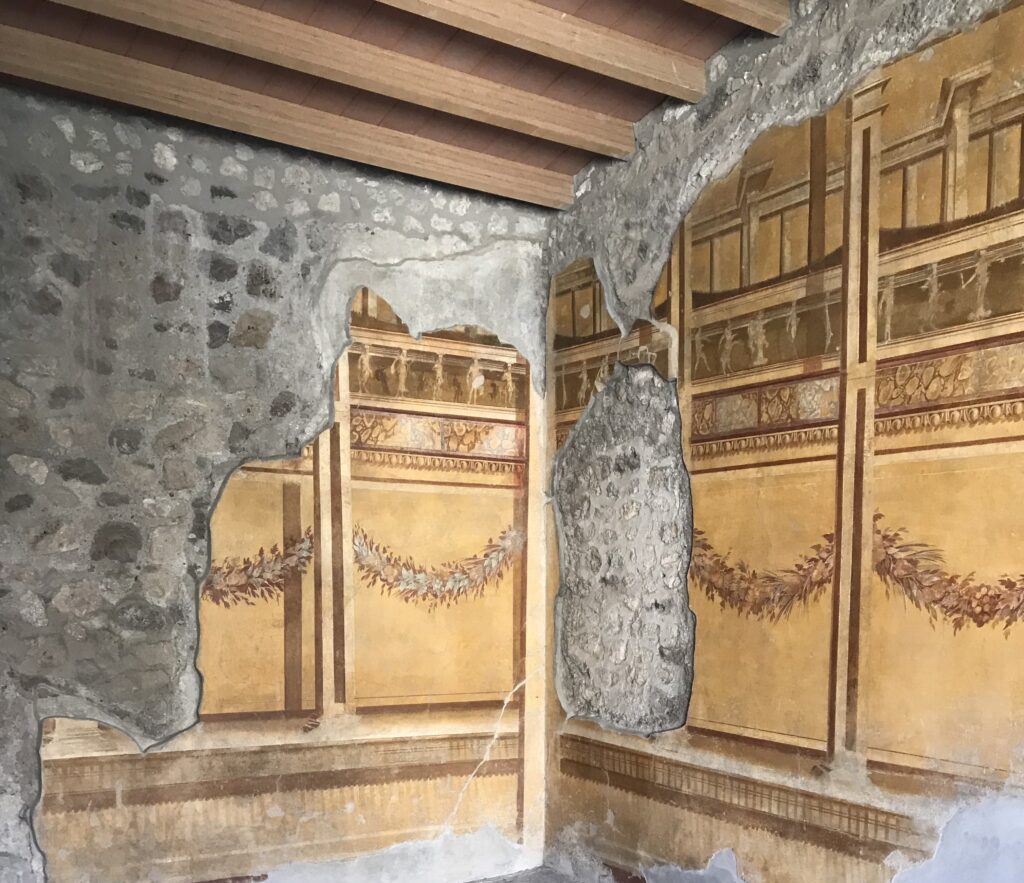
Ornate cornices were copied, as well as the designs of columns. The idea of having internal decorative columns is very clearly copied from Pompeii, as you can see from this photo of a principal bed chamber.
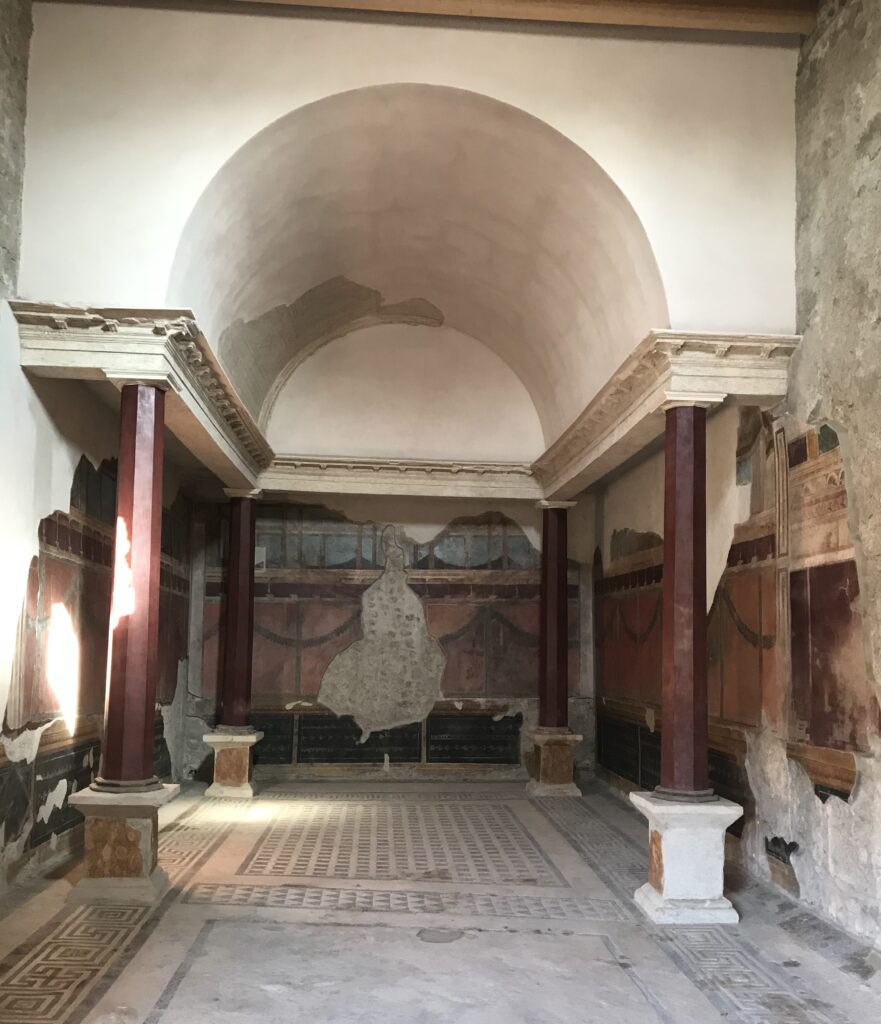
In the bath house of Pompeii, you can see Egg and Dart cornicing lining the base of the ceiling, which is so common in Victorian houses of today. Stepped cornicing abounds in so many areas of the houses as well as at the base of their columns.
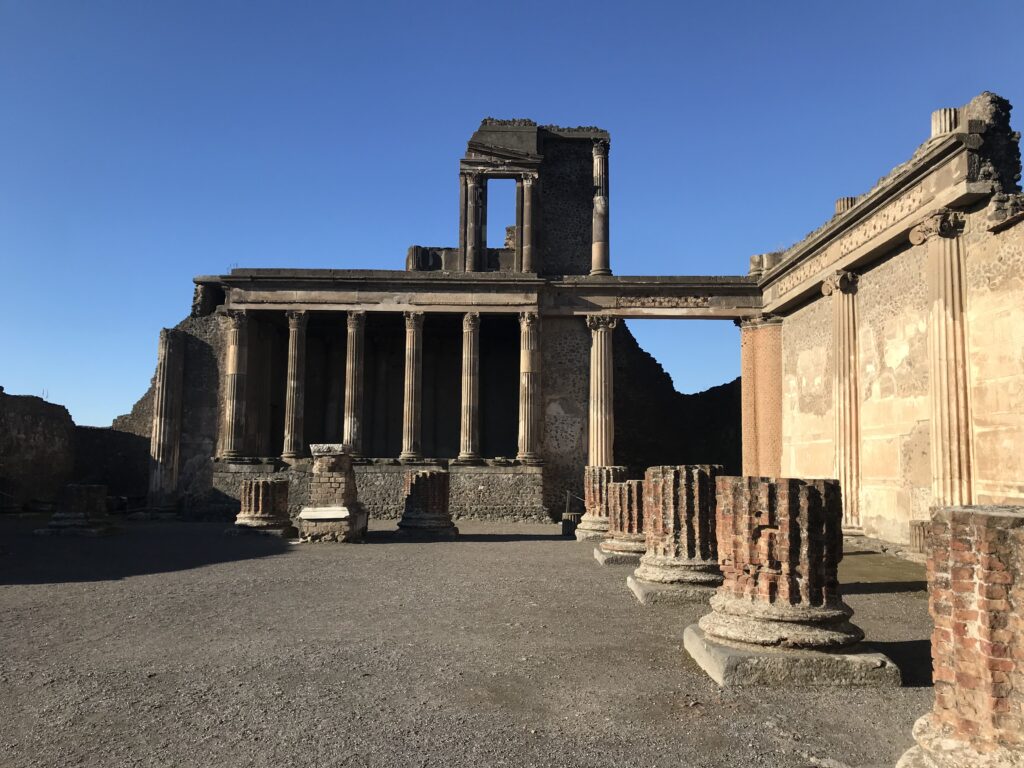
Columns were a very important part of building in Roman times. They were not so much of solid stone as we have them, but more of a curved brick style, with rendering on top. It would be too costly to build a home or palace of solid stone columns, so this method gave the same effect whilst being a lot cheaper and quicker to erect.
Whilst the grand tours brought back many design traits, the one that never came back in any great quantity is that of the inner courtyard with a hollow roof. We feel it’s principally because of the lovely British maritime climate – it would be impractical to do this. We have, however, been asked to help design a Roman/Italian style villa for a client in France, and we will be using a lot of what was seen in Pompeii in this building.
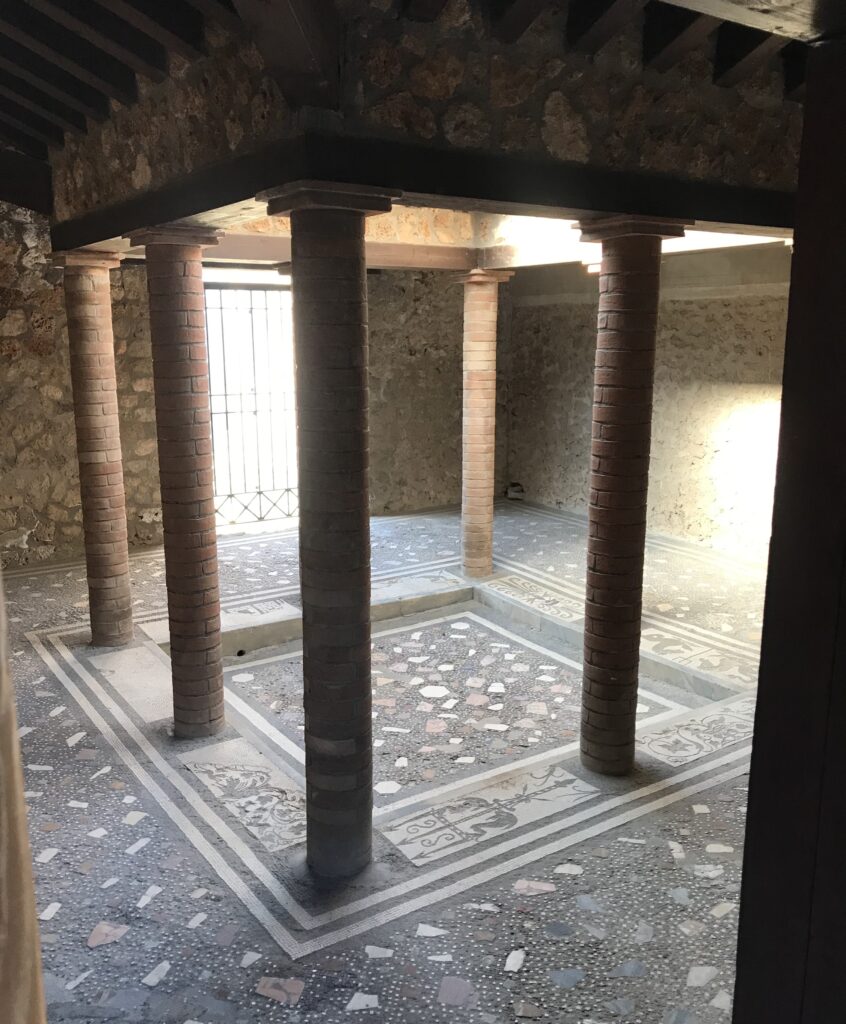
As can be seen on this old factory, the Pompeii influence is still in effect even when this was built with the faux columns and faux multi levels breaking up what otherwise would be an imposing large wall. But what is also interesting about this picture is the ‘modern’ glass building behind it that appears so boring in comparison to the semi ornate curves and columns of the old factory building.
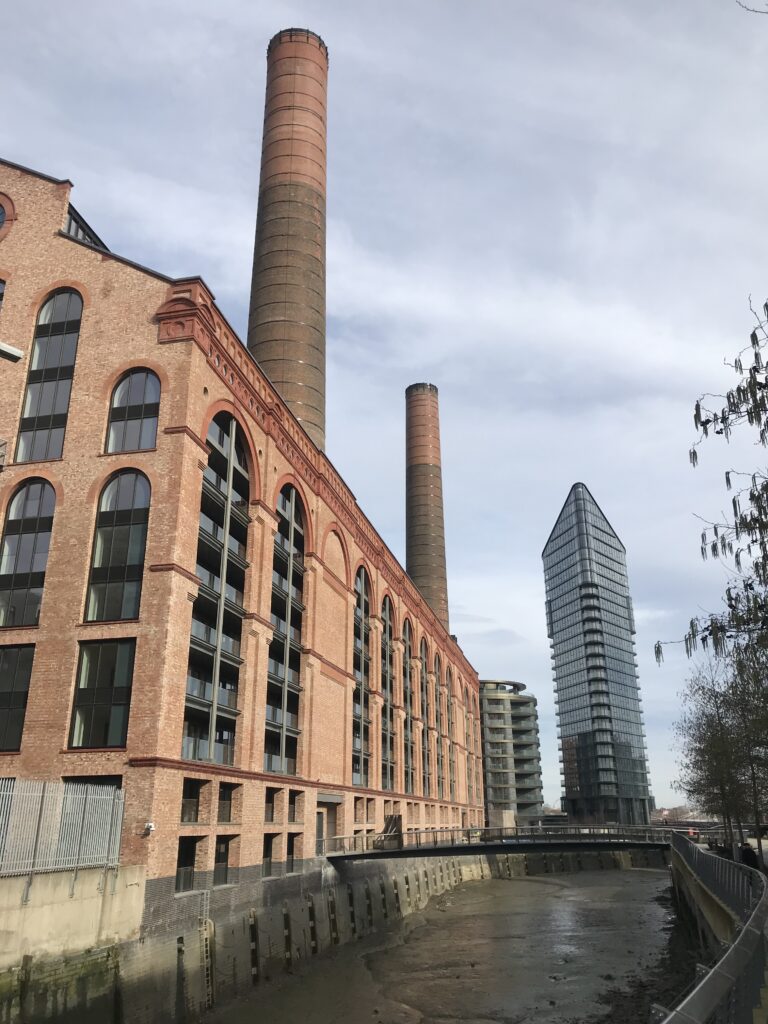
In Pompeii you will come across painted rectangles, which was very much a fashion in 79AD, and you will have seen how this is used as raised plaster panels in Victorian houses in Britain today. A direct influence of ancient times.
We will be incorporating more Romanesque design into our portfolio going forward, whilst obviously listening to our clients’ needs as well. If this might be something you would like to discuss, please feel free to give us a call.